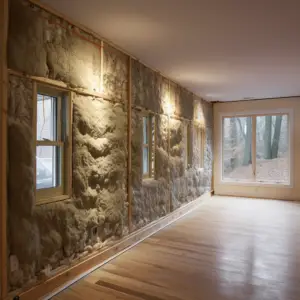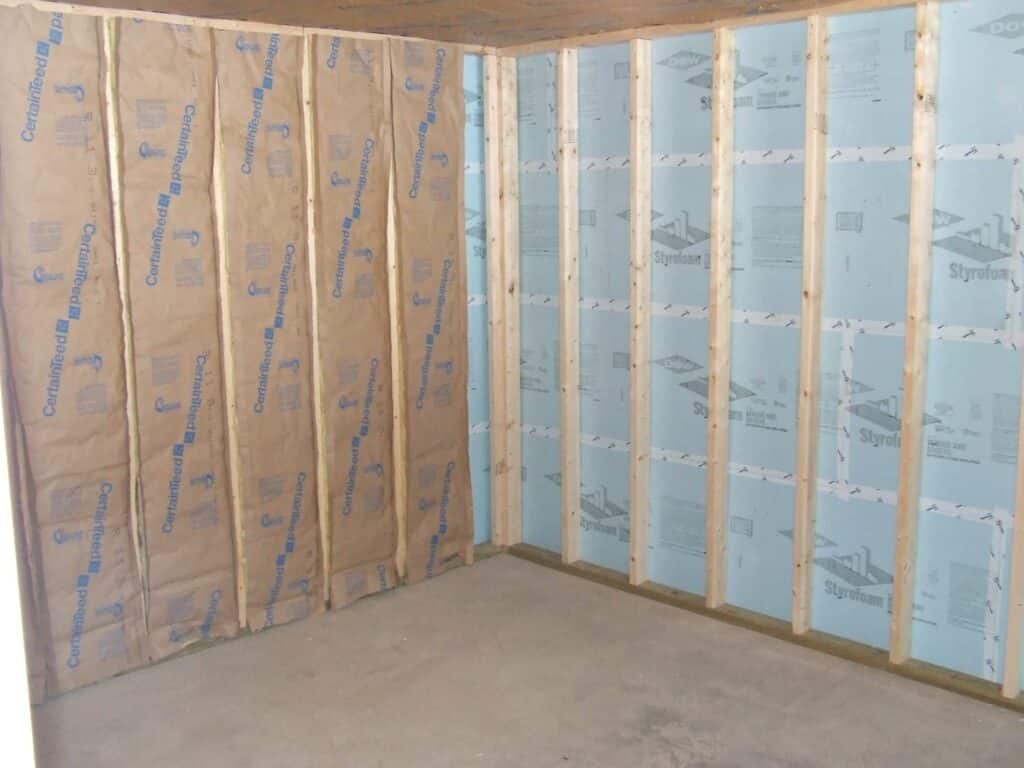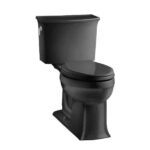Basement wall insulation: If your basement walls are bare, you’re missing out on a lot of energy savings and added comfort. Here we’ll discuss the different types of insulation for basement walls so you can choose the one for your home.
Table of Contents
Types of Insulation for Basement Walls
Spray Foam Insulation
Spray foam insulation is made by forcing heated liquid into an area that needs insulation. The liquid expands when it cools, creating a foam with closed cells full of air bubbles that provide excellent thermal resistance and soundproofing qualities. Spray foam can be applied to any surface, including walls and ceilings, but it is best suited for uneven surfaces like basement walls, where other types of foam would create unsightly ridges or bulges in the material due to uneven expansion during curing time.
Pros:
It provides excellent air sealing, which reduces energy costs by keeping heat inside your home during the winter months and preventing excess humidity from entering your basement during the summer months.
Ease of installation. Spray foam insulation is easy to install because it comes in a can that you simply spray into place. The foam expands to fill any gaps in your wall and then hardens to form an airtight seal that keeps out cold air and moisture from outside.
It can reduce noise from outside sources like traffic or neighbors by reducing sound transmission through walls that aren’t properly insulated.
It’s an effective vapor barrier that keeps interior moisture from getting out through cracks in concrete
Flexibility: Spray foam expands as it hardens, which allows it to fill the nooks and crannies in your basement wall cavities. This makes it an excellent choice for filling irregular spaces and gaps between studs and joists.
Cons:
The main disadvantage of spray foam insulation is that it can cause discomfort issues in some people due to chemicals used in the process (such as formaldehyde).

Fiberglass Insulation
Fiberglass insulation is made from glass fibers that are combined with a binder. The binder acts as the glue that holds the fibers together. Fiberglass insulation comes in batts and blankets, rolls, loose-fill and rigid board. Batts are the most common type of insulation for basements. The Batts are bat-shaped pieces of insulation made of paper or synthetic material. Its Batts are typically used in wall cavities or attics to provide thermal resistance.
Pros: Fiberglass is inexpensive and easy to install, making it an ideal choice for do-it-yourself projects.
Fiberglass batt insulation will help keep your home warm in winter and cool in summer by keeping the heat in during cold weather and keeping heat out during warm weather.
Durability (Fiberglass does not deteriorate over time like other types of insulation)
Cons: Fiberglass batts can settle over time; this will leave gaps between them and the wall cavity that can allow air infiltration through your walls.
Fiberglass batts also tend to sag over time and settle into the walls, which reduces their effectiveness. They also don’t provide much soundproofing or thermal protection because the fibers aren’t dense enough; the result is noise from pipes banging against the concrete walls or cold drafts blowing through cracks in between pieces of drywall.
Another problem with fiberglass batts is condensation: Fiberglass can be easily attacked by mold due to condensation if you don’t have proper ventilation.
Foam Board Insulation
Foam board insulation is made of polystyrene, a material that reduces heat transfer. This type of insulation has been around since the 1950s and has been used in many different applications. Such as attics and walls. Foam board is also referred to as extruded polystyrene (XPS). Which is a brand name for foam board insulation products made by Dow Chemical Company. The brand name XPS refers to how the material was extruded into boards with consistent thicknesses, which makes it easier for contractors to cut pieces for installation purposes.
Pros
The main advantage of foam board insulation is that it’s easy to work with, especially when compared to other types of insulation like fiberglass or cellulose.
It does not require any special tools for installation, so it can be installed by anyone with basic carpentry skills and knowledge. It is much safer to get professional help, though.
Cost-saving. Foam Board insulation is one of the most cost-effective types of insulation available.
Cons:
Foam boards are easy to install, but they lack the R-value of other types of insulation. If you’re using foam board, make sure it has an R-value of at least 3 (the higher, the better).
Foam board is also air-permeable, meaning that it allows air to flow through it. Because of this, it’s not suitable for sealing off moisture from the inside of your basement wall.
How to Insulate Basement Walls
Insulating basement walls is one of the best ways to reduce your heating and cooling costs. It can also keep your house warmer in the winter and cooler in the summer.
Insulating your basement walls is a fairly straightforward project. Whether you’re insulating existing walls or building new ones, there are several different types of insulation available that you can use.
Here are some tips for insulating basement walls:
Find an insulation contractor.
Get three quotes from contractors who specialize in basement wall insulation. Ask about their experience with this type of project and ask for references from previous clients. Check out each contractor’s website and make sure they understand. How to insulate your type of basement wall. Make sure the contractor offers warranties on his workmanship and materials.
Determine how much insulation you need.
The amount of insulation required depends on the climate. Where you live and whether or not you plan on finishing your basement as living space. A good rule of thumb is that one foot of finished wall has about R-12 insulation value. Which is enough to keep heat loss at bay during winter months — but not enough to keep cool air out during summer months.
Before you start insulating, though, make sure that the walls are well sealed. This will help prevent moisture from getting into your wall cavity and causing problems later on.
Conclusion
There you have it—three options for basement wall insulation that are sure to give your walls the protection they need. Keep in mind, this guide is only a general overview of the three different types of insulation. So be sure to consult a professional before making any decisions.
There are a number of different types of insulation that can be used in the basement walls.


